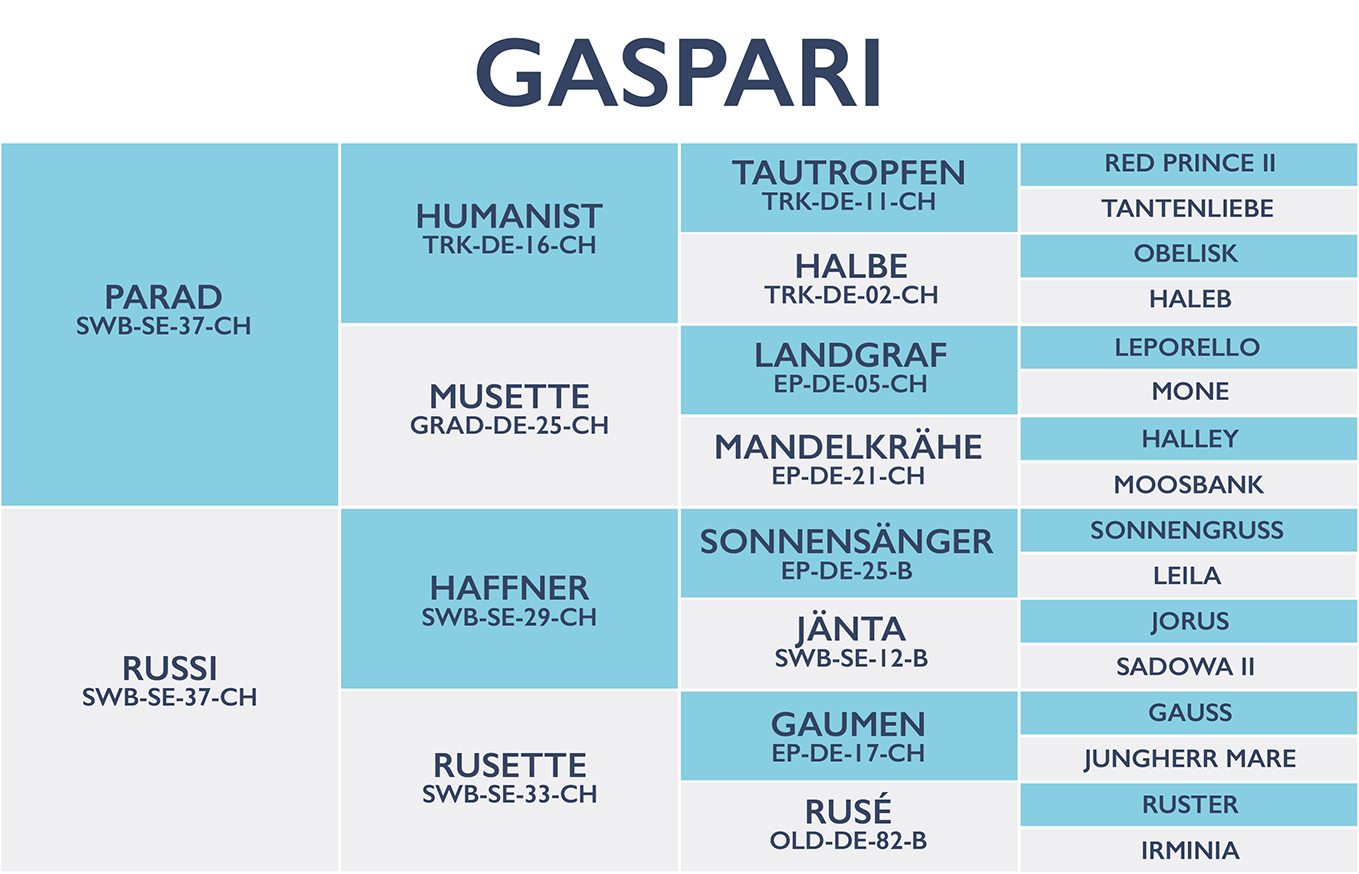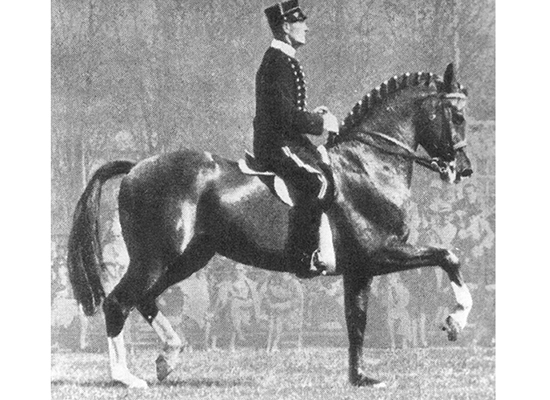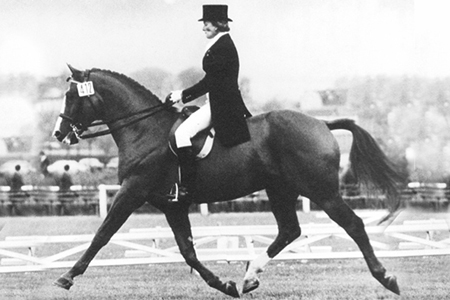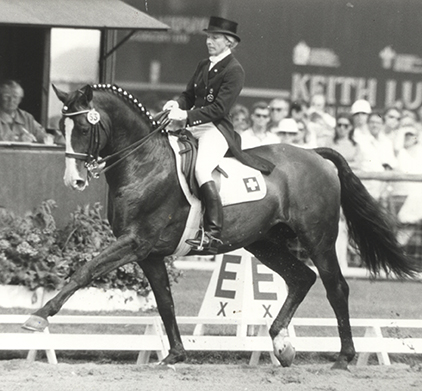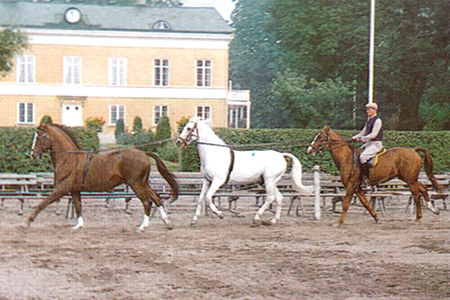1949 –1975 163 cm Chestnut
Breeder: Sten Hummerhielm
Gaspari was one of the first stallions to come out of the breeding stable and into the competition arena – a decidedly modern innovation. He represented Sweden in the dressage at both the 1960 and 1964 Olympic Games – before he sired Liselott Linsenhoff’s Piaff, an individual gold medalist at the 1972 Olympic Games.
Piaff and Liselot Linsenhof
Another son, Elektron also competed successfully in international Grand Prix dressage competition before being sold to Germany and then to the USA in 1982. Elektron’s full brother Herkules was on the Swedish dressage team, and went on to sire five approved stallions, and 70 studbook mares. Gaspari’s son, Gassendi was sold to Germany where he was ridden by Herbert Rehbein, placing 105 times in Grand Prix dressage. Emir with Herbert Kuckluck, was another who spread the fame of the Swedish dressage horse in Germany.
Gaspari is the dam sire of 1988 World Cup Dressage champion, Gauguin de Lully, the sire of Grand Prix competitor Mr de Lully. He also appears on the dam line of the most successful Swedish dressage horse of modern times, Briar.
Gaugin de Lully, successful for Switzerland with Christina Stückelberger
All this leads to the Swedish maxim: “Buy any dressage horse you like, just make sure it has Gaspari in the pedigree.”
Gaspari’s pedigree was a mix of East Prussian, Hanoverian and old Swedish ingredients, with a few dashes of Thoroughbred to round it off. On his father’s side, the Trakehner Humanist was the first in a significant line of stallions in Sweden. Among Humanist’s descendants is Drabant, who sired a number of excellent dressage horses.
Gaspari is one of the horses credited with saving the Swedish breed by finding a new market as horses were phased out of the ranks of the military.
Luckily the famous trainer at the Swedish National Stud, Flyinge, Yngve Viebke came up with the perfect sales strategy – we’ll take our top stallion to the Olympic Games and show the world what we can do! Gaspari starred at Rome in 1960 and suddenly riders were coming from all over the world to buy his offspring. Once again mares were being bred, but this time to produce sport horses.
Viebke is remembered for the shows at the yearly Flyinge Days, the annual display where the staff showed the stallions and mares. One year Viebke appeared with three famous Flyinge stallions, riding one horse and having two on long lines in front. He was riding Piaff, having Immer in between and Gaspari in the lead. When he got them all to piaffe and passage, it was sensational!
Now Gaspari rests under his headstone at Flyinge in the Chestnut Courtyard, the famous outdoor ring in front of the executive villa, where he and Yngve Viebke gave their famous performances… and he will be remembered as one of the first – if not the very first – of the dressage stallions who made their names as competitors first, sires second.
Preparing for the Stallion Parade, Yngve Viebke is riding Piaff (gold medallist at Munich) and driving the grey, Immer, and in front is Gaspari
